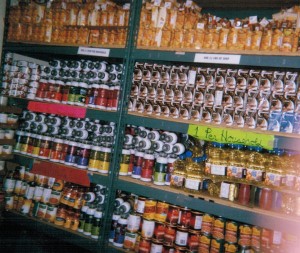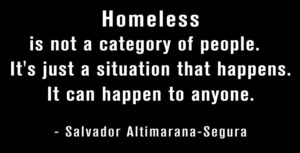Is This Life Now?

The New York Times – Friday, February 27, 2015 – “Food Waste Grows with the Middle Class” – page A24
A recent New York Times Editorial highlighted the “massive food waste” around the world. I urge you to read it. It was extremely well written, as are all of the NYT editorials.
Containing all the right buzz words:
landfills,
hunger,
waste disposal,
global warming threat,
it just didn’t go far enough.
FOOD PANTRIES FEED THEIR CLIENTS SURPLUS FOOD INTERCEPTED ON ITS WAY TO THE LANDFILL. They simply no longer have the $$$ for food at the supermarket or they live in food deserts (neighborhoods where there are no grocery stores or supermarkets.)
Is this life now? Yes, this is life in 21st century America. This is not emergency food. This is the new way we live in the good old U S of A.
PEOPLE ARE OFTEN ASHAMED TO SHOP IN PANTRIES. They don’t want to be seen bringing pantry food home. They don’t want to explain to their friends, neighbors, relatives about their inability to buy food at the supermarket. Well, now they can move on past the shame and embarrassment. With this New York Times editorial, we can all see that hungry people lacking $$$ to purchase food at a grocery store are now a part of the solution instead of the problem.
Hungry people shopping at food pantries help fight food waste. Food pantry shoppers can now realize they are helping reduce global warming emissions.
People shopping at pantries are in a financial bind where they are forced to make trade-offs. They pay rent when they don’t have enough food to eat. They “heat or eat”.
Often, they make health care trade-offs. People unable to seek needed medical care are unable to make good choices. Eventually they’ll be forced to deal with the medical situation and the longer they wait, the more expensive the situation becomes. The healthcare $$$ has been diverted to rent or transportation to get to work.
Articles like the New York Times editorial make it difficult for citizens in our country to completely ignore the fact that more and more people are going without food in our great nation because they simply don’t have the $$$ to buy it. We can no longer deny that hunger exists and it is becoming more and more difficult to be indifferent about it.
So, now, with this editorial, those of us who are hungry and ashamed of the situation we are caught in can feel better about ourselves. We can now shop at the pantry and eat at the soup kitchen knowing that we are, in spite of the low wages we work for, doing our part for a healthy planet. We are fighting global warming. We are our tax dollars at work.
If you read this blog and feel you are among those who don’t have enough $$$ for food, now is a good time to begin to shop at a pantry for the food you need for your household.
There is no better time than now for you to not only support your community but also your planet.
See you at the pantry!
Thank you for reading this blog.
Please refer this article to your preferred social media network.
If you found this article a help, please leave your comments below and check out our other posts.
Don’t forget to join the email list.
Peace and food for all.
Thurman Greco










